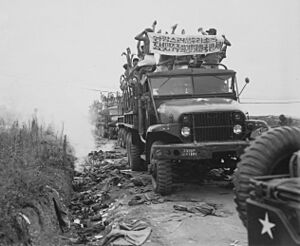Prisoner exchange facts for kids

A prisoner exchange or prisoner swap is a special agreement between two sides who are fighting. It's when they decide to trade people they have captured. This could be soldiers (called prisoners of war), spies, or even hostages. The main goal is to get their own people back safely.
Rules for Prisoner Exchanges
The Geneva Conventions are a set of international rules for how countries should act during war. These rules say that prisoners who are too sick or hurt to fight anymore should be sent back home. This applies no matter how many prisoners are affected. The country holding them cannot refuse a real request to send them back.
History of Exchanges
The Geneva Convention from 1929 covered these rules in detail. During World War II, the International Red Cross helped with many large prisoner exchanges. They followed these rules to help thousands of people return home.
Even during the very tough Second World War in Yugoslavia, there were prisoner exchanges. The German forces and the Partisans (local fighters) managed to trade prisoners. They even created a special neutral zone. This was a safe place where prisoners could be regularly swapped. This agreement helped save many lives until the war ended in April 1945.
See also
- Extradition
- Arab–Byzantine prisoner exchanges
- List of Israeli prisoner exchanges
- Humanitarian exchange
- Hostage diplomacy

